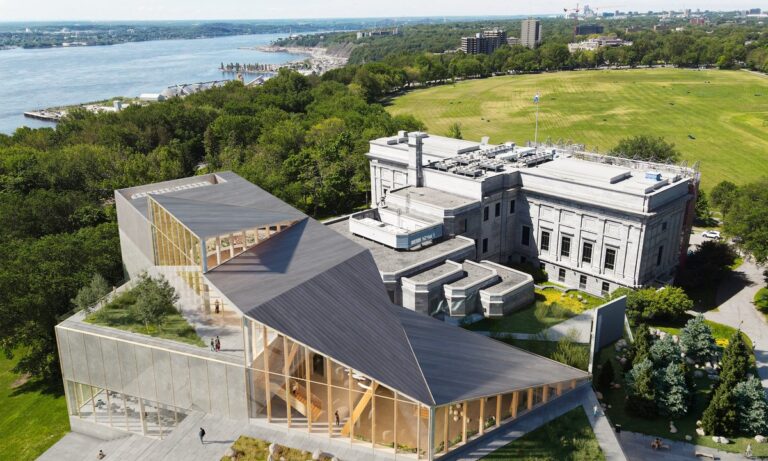
The Musée National des Beaux-Arts du Québec (MNBAQ) is breaking ground on a shiny new addition to its Québec City campus in honor of the province’s most famous modern artist, Jean Paul Riopelle (1923-2002), but the cost of almost doubled since plans for the expansion were first announced. In September 2022, when MNBAQ selected Montreal firm Les Architectes FABG to design the Espace Riopelle, the price was C$42.5 million ($32.6 million); now that the museum has selected a contractor to build the project and site preparation has begun, the budget has risen to C$84 million ($62.15 million).
In announcing the selection of contractor CONCREA to carry out the project, the museum revealed that it had carried out “a comprehensive assessment of project costs” between October 2022 and December 2023, and that the new figure is “a more accurate estimate of the cost”. The provincial government’s contribution to the project has more than doubled from the previously committed C$20 million ($15.3 million) to C$44 million ($32.6 million), while the original commitment of C$20 million from the Jean-Paul Riopelle Foundation could rise to C$25 million ($18.5 million). The municipal government of Quebec City doubles its contribution, to 5 million Canadian dollars ($3.7 million), and the MNBAQ Foundation quadruples its support to 10 million Canadian dollars ($7.4 million). The museum will launch a major fundraising campaign in the fall.
“With a total investment of 44 million Canadian dollars, the Quebec government is making a contribution commensurate with its commitment to our culture,” Mathieu Lacombe, the province’s Minister of Culture and Communications, said in a statement. “The Espace Riopelle will transcend time and generations to enrich our cultural heritage, in line with the giant that Jean Paul Riopelle represents in our collective imagination.”
With major works starting later this spring, the museum expects the Espace Riopelle to open in 2026. Nearly 9,000 works from the museum’s collection have been moved to make way for construction or exhibition purposes, and many installations around the home and office spaces were relocated.
Once completed, the new pavilion will consist of a series of ascending geometric volumes with glass walls, leading visitors into a circular room that will house Riopelle’s magnum opus, the 30-painting narrative fresco. Tribute to Rosa Luxemburg (1992). The pavilion’s design was inspired, in part, by Riopelle’s illuminated studio and will offer panoramic views of the St. Lawrence River. It was first announced as part of the celebrations marking the centenary of Riopelle’s birth in October 1923.

